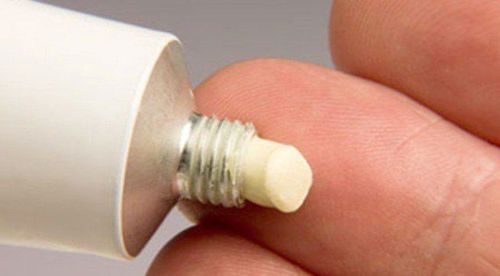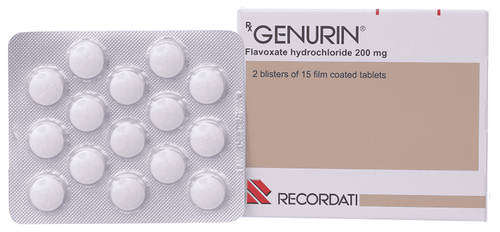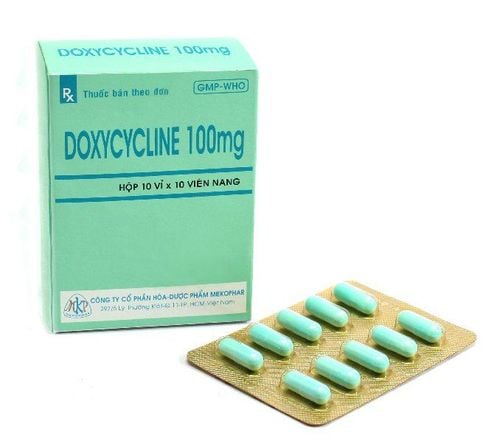This is an automatically translated article.
Binozyt medicine contains the main ingredient is Azithromycin, which is used to treat bacterial infections such as sinusitis, pneumonia, otitis media, ... To use Binozyt safely and effectively, patients should consult a consultant. from a pharmacist or specialist before use.
1. Ingredients of Binozyt
Binozyt drug is prepared in the form of powder mixed with oral suspension. Each vial of Binozyt contains the following ingredients:
Azithromycin 200mg. The other excipients are just 5ml. Azithromycin belongs to the semi-synthetic antibiotic of the Azalide class, a subgroup of the Macrolides. Structurally, Azithromycin differs from Erythromycin by the addition of a nitrogen atom substituted with a methyl group to the lactone ring. Therefore, chemically, Azithromycin is an antibiotic belonging to the macrolide family of the Azalide subgroup.
2. Effects - Indications for Binozyt
2.1. What does Binozyt do?
Binozyt medicine contains the main active ingredient, Azithromycin, which works to prevent the growth of bacteria. Azithromycin binds to the 50S subunit of the ribosome, inhibits the decoding of tRNA, inhibits protein synthesis, so bacteria cannot grow and cause disease.
Azithromycin has a broad antibacterial spectrum, effective against both Gram-positive and Gram-negative bacteria, in which it has strong effects on M.catarrhalis, Neisseria, H.influenzae, opportunistic bacteria in HIV/AIDS patients.
2.2. Indications for the use of Binozyt
Binozyt drug is indicated in the treatment of infections sensitive to the antibiotic Azithromycin such as:
Acute sinusitis; Acute bacterial otitis media; Pharyngitis, tonsillitis ; Chronic bronchitis exacerbation; Pneumonia of mild to moderate severity; Skin and soft tissue infections; Uncomplicated Chlamydia trachomatis urethritis; Cervicitis.
3. Usage, dosage of Binozyt
How to use Binozyt:
Add water and shake well to get 15ml of oral suspension. Take Binozyt at least 1 hour before meals or 2 hours after meals. The reconstituted Binozyt suspension can be kept stable at temperatures below 25 degrees Celsius for 10 days. Shake the vial of Binozyt suspension well just before drinking. Do not use the drug Binozyt has expired. Dosage of Binozyt:
Dosage of Binozyt for adults:
Treatment of uncomplicated Chlamydia trachomatis urethritis and cervicitis: Use a dose of 1000mg orally once only. Other indications: The total dose of Binozyt should not exceed 1500mg/day divided into 500mg/day x 3 days, or use for 5 days with a dose of 500mg on the first day and 250mg from day 2-5. For children and adolescents under 18 years of age:
The total dose of Binozyt is 30mg/kg/day. Divide into 10mg/kg/day and use for 3 days. Or treat 5 days with a single dose of Binozyt 10mg/kg on the first day, then use 5mg/kg on the next 4 days. Children under 1 year:
Binozyt is not recommended due to lack of safety data. For the elderly:
The dose of Binozyt is similar to that of adults, but with caution due to the risk of arrhythmias and torsades de pointes. How to handle when missed dose, overdose Binozyt:
If you forget the dose of Binozyt, you must take the medicine as soon as you remember. If the missed dose is close to the next dose, skip it and take the next dose as directed. Do not take a double dose of Binozyt to make up for a missed dose. When overdose of Binozyt, patients may appear symptoms such as nausea, vomiting, diarrhea, hearing loss. Therefore, if the patient uses an overdose of Binozyt, it is necessary to notify the doctor immediately for advice and timely treatment. Note: The above dose of Binozyt is for reference only. The specific dose of Binozyt depends on the condition and the progression of the disease. To get the right dose of Binozyt, patients should consult their doctor or healthcare professional.
4. Contraindications to the use of Binozyt
Binozyt is contraindicated in case of hypersensitivity to the active ingredients Azithromycin, Erythromycin, Macrolide antibiotics and any of the excipients in the drug.
Contraindications are absolute. This means that Binozyt can not be used for any reason in cases of contraindications. Any decision on dosage and how to use Binozyt should be made according to the doctor's prescription.
5. Side effects of Binozyt
Binozyt is well tolerated. Most side effects are moderate to mild, reversible upon discontinuation of treatment.
Common side effects include:
Headache ; Nausea, vomiting; Abdominal pain, diarrhea. Uncommon side effects:
Pharyngitis; Gastroenteritis; Oral thrush; Respiratory disorders; Neutropenia ; Angioedema; Insomnia, dizziness; Anorexia; Hearing disorders; Rash, itching, hives, dry skin; Osteoarthritis, muscle pain; Difficulty urinating. Rare:
Liver dysfunction ; Cholestatic jaundice; Sensitivity to light Visual impairment, blurred vision. In addition to the above signs, Binozyt medicine can cause other unwanted effects. It is necessary to closely monitor and advise patients to notify their doctor of any side effects encountered during the use of Binozyt.
6. Interactions with other drugs
Caution when combining Binozyt with the following drugs:
Antacids: Binozyt should be taken at least 1 hour before or 2 hours after taking antacids. Digoxin and Colchicine: Concomitant use of Binozyt increases serum concentrations of these substances. Atorvastatin: Increased risk of rhabdomyolysis. Cisapride: Concomitant use with Binozyt may prolong the duration of action of Cisapride, ventricular arrhythmias and torsades de pointes. Coumarin-type oral anticoagulants: Prothrombin time should be monitored if Binozyt is co-administered. Cyclosporin: Increased plasma concentrations of this substance. Nelfinavir: Increased plasma concentrations of Azithromycin when co-administered with Binozyt. Rifabutin: Increased risk of neutropenia if used with Binozyt. To avoid drug interactions, before being prescribed Binozyt, patients should inform their doctors about all the drugs they are using, including functional foods. The doctor will base on that to prescribe the appropriate Binozyt.
7. Notes when using Binozyt and how to store it
Note when using Binozyt:
Using Binozyt on pregnant women: Only use Binozyt when absolutely necessary, must weigh the benefits of the mother and the harm to the fetus. Lactation: Azithromycin has been reported to be excreted in human milk. However, there are no adequate and well-controlled clinical studies in nursing women, so consult your doctor before using Binozyt. People who drive and use machines: The effects of Binozyt on the ability to drive and use machines have not been reported. However, patients should be careful when using Binozyt because Binozyt has the risk of causing vision loss and blurred vision. It is necessary to adjust the dose of Binozyt for patients with liver and kidney failure (ClCr <40ml/min). The risk of superinfection with non-susceptible organisms and pseudomembranous colitis may occur with the use of broad-spectrum antibiotics such as Azithromycin. Use with caution because Azithromycin has the potential to cause allergic reactions such as angioedema and anaphylaxis, although very rarely. Store Binozyt:
Store Binozyt at a temperature below 25 degrees Celsius. Keep Binozyt in a cool, dry place, avoid direct sunlight. Store Binozyt in its original packaging to avoid confusion with other medicines. Above is all information about Binozyt drug, patients need to carefully read the instructions for use, consult a doctor / pharmacist before using. Note, Binozyt is a prescription drug, patients need to use the drug as prescribed by the doctor, absolutely do not self-treat at home.













